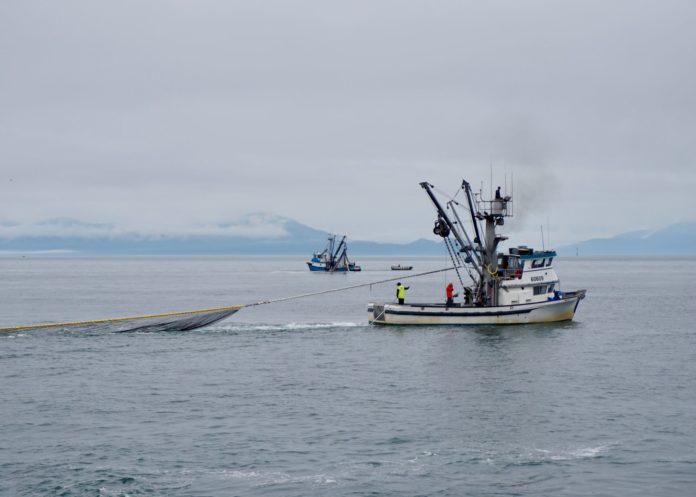
The Bristol Bay red king crab fishery is back on track, after being closed for two years, with a total allowable catch of 2.15 million pounds – just a bit lower than when it was last opened in 2020 at 2.6 million pounds.
The announcement on Friday, Oct. 6, was cheered by crab captains and Alaska Bering Sea Crabbers, as a way to get back out doing what they loved, pay some bills, and keep crew working, all while keeping the crab resource sustainable for generations to come.
“They are tracking closely the science around the health of crab stocks and want to help crab continue to rebound,” said Jamie Goen, executive director of Alaska Bering Sea Crabbers (ABSC). “We’re adding extra measures this season during our directed pot fishery for crab to reduce our interactions with crab. We’re increasing communications with the fleet on best handling practices, clean fishing areas, and opportunities to share gear.”
Veteran crabber Glenn Casto, captain of the FV Pinnacle, called it a start in the right direction, that will help pay some bills and help out crew.
His words were echoed by veteran crabbers Oystein Lone, captain and owner of the FV Confidence and FV Pacific Mariner, and Gabriel Prout, a third generation Alaska fisherman aboard the FV Silver Spray.
“The size of the fleet participating will be smaller due to financial constraints,” said Prout. “The impacts the fleet and the stock continue to face highlights the need for state and federal managers to implement better management strategies to help protect the health of the crab population and those that rely on it.”
“We’ve got to take steps to build resilience in this fishery for the crab, the fishermen and the communities,” Prout continued.
“It’s a needed lifeline for us to keep our businesses afloat,” said Lone.
Lone also said he hopes that the North Pacific Fishery Management Council would take steps to further protect the Red King Crab Savings Area in the near future to help king crab stocks continue to rebound. “We need to make sure midwater trawling for pollock stays out of that area if it is being fished on the bottom, hurting crab stocks and disturbing habitat, or use enforceable technology to keep the gear truly midwater,” Lone said.
Goen expressed concern that the Bering Sea snow crab, which provides major income to the fleet, is closed again for the season. The fleet is still waiting on federal fishery disaster payouts from 2019, 2021 and 2022 disasters, and the outlook for snow crab continues to be poor, she said. While the science shows signs of life for a future snow crab fishery, the increased numbers of juvenile snow crab need several years to grow to harvestable size, she said.
ABSC is a trade association representing independent crab harvesters who fish commercially for king, snow (opilio), and bairdi (Tanner) crab with pot gear in the Bering Sea and Aleutian Islands crab rationalization program. A total of some 60 vessels and 350 fishermen participate in these fisheries, including communities around the Bering Sea, Kodiak, Anchorage, Homer, and the Pacific Northwest.
Alaska Department of Fish & Game (ADF&G) also announced that the tanner crab fishery would open on Oct. 15.
The allocation for the western Bering Sea is 1.32 million pounds, including 1.188 million pounds for individual fishing quota (IFQ), and 132,000 pounds for community development quota (CDQ). For the eastern Bering Sea the overall quota is 760,000 pounds, including 684,000 pounds for IFQ and 76,000 pounds for CDQ.
ADF&G has made a decision to keep the Bering Sea snow crab Saint Matthew Island section, blue king crab, and Pribilof District red and blue king crab fisheries closed, due to survey results that show stocks in those fisheries were below the federal minimum stock size threshold for fishing.














